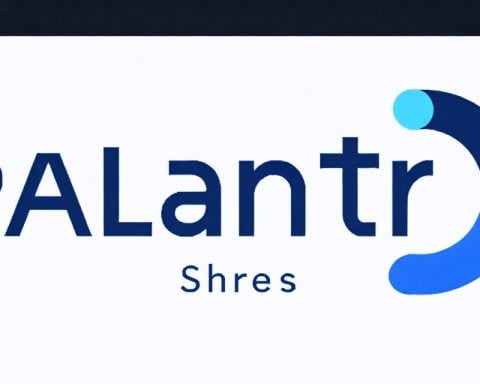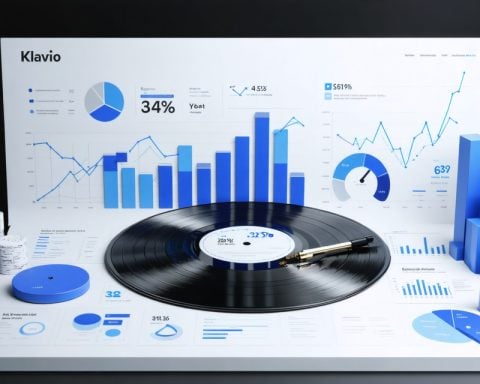- A young investor sought advice on Reddit to generate passive income from a trust fund available in 12 years.
- The r/Dividends community suggested dividend-focused strategies, emphasizing Exchange-Traded Funds (ETFs) for steady returns.
- ETFs like Schwab U.S. Dividend Equity ETF could offer potential annual returns of $35,000 with growth rates of 6-10%.
- A 70/30 blend of Vanguard S&P 500 ETF and Schwab’s ETF was proposed for a balanced approach.
- For higher risk tolerance, options like JPMorgan Equity Premium Income ETF were recommended.
- A key takeaway was to diversify investments and reinvest dividends for long-term growth, embodying patience and resilience.
- Crafting a personalized investment path, balancing risk and wisdom, is essential for achieving financial success.
Financial dreams swirled through the digital ether when a young investor turned to Reddit with a million-dollar predicament. The allure of a trust fund, locked behind a 12-year veil, left him yearning for a strategy to extract passive income without jeopardizing his golden goose. His post in the popular r/Dividends community sparked a flurry of impassioned advice.
The vibrant stream of responses suggested an array of dividend-focused avenues. Among the most resonant was the idea to dive into Exchange-Traded Funds (ETFs), tailored for dividend yield. Visions of substantial annual returns shimmered enticingly, like the Schwab U.S. Dividend Equity ETF potentially spinning off $35,000 a year while nestling into a growth trajectory of 6-10%.
Others whispered of combining funds, a strategic 70/30 blend of Vanguard S&P 500 ETF and Schwab’s offering. For those willing to flirt with a higher risk, the idea of diving into high-yield funds like JPMorgan Equity Premium Income ETF simmered enticingly.
Yet, amidst this chorus, a voice emerged, urging a diversified dance across multiple funds, and to let dividends snowball through reinvestment, singing praises of the enduring power of the S&P 500. The flash of digital realms, with their hundreds of tribal voices, echoed with one clear takeaway: in the world of investment, diversity coupled with patience forms the backbone of financial resilience.
As the digital crowd dispersed, the underlying message lingered. Whether through a cautious embrace of ETFs or a daring plunge into higher yield ventures, every investor must sculpt their path, balancing wisdom with boldness, to unlock the gentle art of earning while they sleep.
Unraveling the Million-Dollar Investment Dilemma: Strategies, Trends, and Expert Insights
How-To Steps & Life Hacks for Generating Passive Income with ETFs
1. Define Your Goals: Determine the amount of passive income you wish to generate and your risk tolerance. This will guide your selection of ETFs.
2. Research Dividend ETFs: Look for ETFs that focus on dividend yield. Consider well-known options like the Schwab U.S. Dividend Equity ETF (SCHD) for stability and the Vanguard S&P 500 ETF (VOO) for growth potential.
3. Assess Yields and Growth Potential: Analyze the ETF’s historical yields and growth. For instance, the Schwab U.S. Dividend Equity ETF can potentially yield about 3.5% annually.
4. Diversify Your Investment: Combine different ETFs to balance risk and return. A 70/30 split between a stable ETF like VOO and a higher yield ETF such as the JPMorgan Equity Premium Income ETF (JEPI) can reduce risk.
5. Reinvest Dividends: Utilize the power of compounding by reinvesting dividends through a Dividend Reinvestment Plan (DRIP). This can significantly enhance long-term growth.
Real-World Use Cases
Investors with long-term horizons have successfully used ETFs to build wealth. For example, retirees often rely on a diversified portfolio of ETFs to generate steady income without the need to sell assets.
Market Forecasts & Industry Trends
The ETF market is expected to continue growing robustly. According to a report by PwC, global ETF assets are projected to exceed $20 trillion by 2026. Dividend-focused ETFs are particularly popular as investors seek stable returns in uncertain markets.
Reviews & Comparisons
– Schwab U.S. Dividend Equity ETF (SCHD): Praised for its strong historical performance and low expense ratio.
– Vanguard S&P 500 ETF (VOO): Offers exposure to top U.S. companies with a balanced risk-reward profile.
– JPMorgan Equity Premium Income ETF (JEPI): Attractive for its higher yields, though it carries higher risk.
Controversies & Limitations
While ETFs offer diversification and liquidity, they can also expose investors to market volatility. High-yield ETFs, in particular, may involve more risk than traditional dividend ETFs. It is essential to evaluate the underlying assets and management strategies.
Features, Specs & Pricing
– Expense Ratios: Look for ETFs with low expense ratios to maximize returns. SCHD, for instance, offers one of the lowest in its category.
– Minimum Investment: Most ETFs do not require a minimum, making them accessible to all investors.
Security & Sustainability
ETFs are generally considered safe and transparent due to their structure and regulation. Sustainable investing options, such as ESG (Environmental, Social, and Governance) ETFs, are also gaining traction, offering ethical investment alternatives.
Insights & Predictions
Experts suggest maintaining a diversified portfolio that includes both growth and income-generating assets. As inflation concerns rise, dividend-focused strategies may become increasingly popular among investors.
Pros & Cons Overview
– Pros: Diversification, liquidity, compounding opportunities, and accessibility.
– Cons: Market risk, potential for lower-than-expected yields, management fees.
Actionable Recommendations
– Start with a balanced portfolio of dividend-focused ETFs to harness growth and income.
– Regularly review and adjust your portfolio to align with changing market conditions and personal goals.
For more information on investing, visit Vanguard or Schwab.
By following these strategies, investors can effectively navigate the complex landscape of ETFs to achieve their financial dreams of generating passive income. Remember, diversity and patience are your best allies on this financial journey.



















